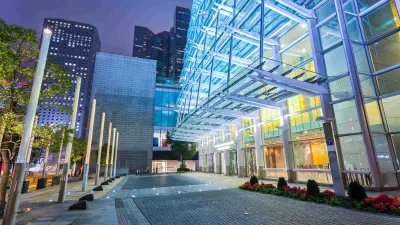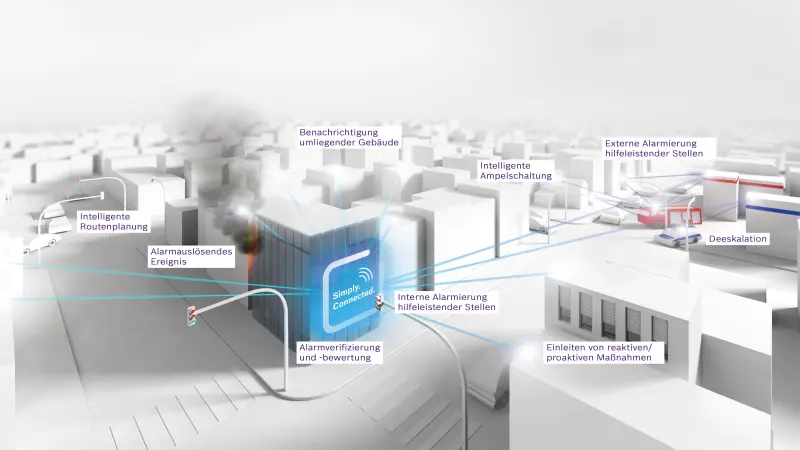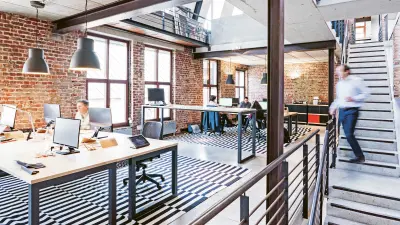Smart Cities - new safety solutions for the cities of tomorrow

Everything is getting smarter – not just our phones, but our buildings and cities as well. It’s all possible thanks to the Internet of Things (IoT) and modern network solutions. Many cities have already implemented ‘smart city’ concepts. But what does that mean exactly? What are the advantages of networked buildings? How will these ideas change the discussion about safety?
One thing is clear – our cities need intelligent solutions. The fact is, urbanization is on the rise and more people are moving to major cities every year. According to an analysis by the United Nations, 70 percent of the global population will be living in cities by 2050. Today, these cities already account for 75 percent of the world’s power consumption.
Air quality, energy efficiency, public security, and mobility are the four biggest challenges presented by this trend. With the help of smart networking, we can develop solutions to successfully shape the urban spaces of the future.

How networking can make buildings safer and more efficient
The commercial buildings of the future have to be safe, comfortable, energy-efficient, and smart. Forward-thinking solutions and proactive measures will help to meet these demands. Intelligent solutions and innovative, networked technologies that interact with and learn from one another transform conventional structures into smart buildings.
Today’s building technology are generally composed of a number of different individual systems, including statutory fire protection measures, data networks, and telecommunications equipment, as well as access control, video surveillance and lighting systems.

These systems are typically controlled by separate management systems which require extensive labor and result in astronomical operating costs. Innovative management systems, on the other hand, are capable of networking these disparate building management systems and integrating existing structures with third-party systems. Unifying a range of different subsystems in a complete, overarching system makes it possible to automate processes, combine individual functions, and control these functions using a single, centralized platform. These types of comprehensive solutions increase security, boost energy efficiency via unified monitoring processes, and reduce operating costs.
Smart buildings make good neighbors
The smart building concept is founded on immense quantities of data captured by intelligent sensors.
This data is then processed and consolidated into valuable information. The sensor systems can gather information about energy and water consumption, temperature, and lighting conditions, register data on weather and humidity, or issue notifications in the event of fire or unauthorized intrusion. This data is generally not personal in nature and therefore has little relevance in terms of data protection.
Generally speaking, access control and video surveillance systems are very different in this regard. The fact that it is possible to create security solutions without the need for personal data highlights the versatility of these sensors. For example, fire alarms with additional functions are able to draw conclusions about how many people are in a building simply by monitoring temperature and relative humidity.

Through the use of intelligent networking, big data analysis, and data interpretation by artificial intelligence (AI), each individual building is able to benefit from information supplied by neighboring buildings. If all of the buildings in a city are ‘smart’ and networked with one another, the benefits far exceed pure technological progress.
In the event of a fire, for example, all neighboring buildings can be informed in real time. This allows reactive or even proactive protective measures to safeguard people, property, and the environment to be deployed.
Remote maintenance and early warning
Intelligent service concepts augment data analysis across buildings and systems.
The cloud-based Efflink platform provides Bosch with a smart solution for exchanging and analyzing data. It supports all IP-based security systems, regardless of manufacturer and available functions. This makes Bosch a pioneering building security systems provider, as it not only offers traditional remote services such as remote maintenance, but also builds upon these value added services: Based on historical data, any risk of faults or hazards can also be detected well in advance and critical situations safely avoided.
This predictive maintenance enables maintenance times to be optimized without disrupting normal building operations or requiring advance planning of the necessary investments. For security system operators and users, this means that components and processes can be evaluated at any time and adjusted promptly as needed. At the same time, predictive maintenance increases building energy efficiency.
The success of any smart solution depends on dialog. In other words, buildings and individual facilities cannot be planned and monitored in isolation. Instead, innovative technologies must be factored into the equation as early as the planning phase when developing infrastructure and building concepts.
